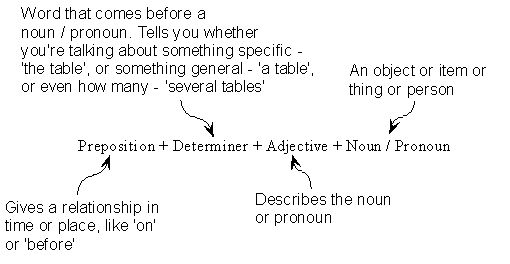Prepositions
Prepositions are single words or a few words together that are used in a sentence to tell the reader how two parts of a sentence are related to each other. They describe how two things are related in position, or location, or time, or even movement. For instance:

In this sentence, the preposition ‘on’ tells the reader the relationship in position between the ball and the table - the ball is ‘on’ the table. Of course, Tom could have put the ball in a different location:
Tom put the ball under the table.
The preposition ‘under’ again tells us the relationship between the position of the ball and the table.
Usually, prepositions are combined with certain other word types to form a phrase, which acts as an adjective or an adverb.

For instance:

The whole phrase, including the preposition, acts as either an adverb or an adjective. In this case, the phrase ‘over the horizontal bar’ acts as an adverb - it tells the reader extra information about the infinitive verb ‘to jump’.
These prepositional phrases don’t always contain all the elements shown above. For instance, this sentence doesn’t have a determiner or an adjective - it’s just got a preposition and a noun:
Tom put the ball under water.
Click here to move on to the next topic: Prepositions of place or location